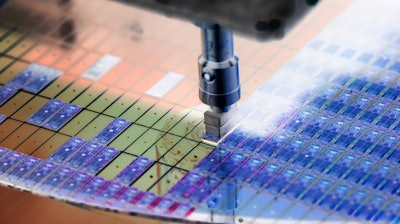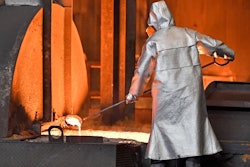
A lot goes into running a semiconductor fabrication plant (fab). Ongoing maintenance helps foundries and integrated device manufacturers optimize the performance and increase the life span of their fab equipment. With the massive chip and equipment shortage currently impacting the global economy, it is more important than ever for fab managers to ensure their equipment is performing to the manufacturer’s specifications. The following best practices will help keep fabs running at peak performance, while getting the most out of the existing tool sets.
Preventative maintenance
Many fab managers are so focused on not disrupting operations that they undervalue the importance of performing routine equipment maintenance. This choice is short-sighted, because when equipment problems inevitably arise, the disruptions to operations are much harsher, longer and more costly.
Maintaining semiconductor manufacturing equipment is similar to maintaining cars. Cars need routine oil and fluid changes, parts replacement, etc. If a car owner decides to skip maintenance work to save time or money, his or her car might actually be fine for a while, but eventually, that car will break, and when it does, it often becomes a major repair.
Just as with cars, the time and money needed to perform routine maintenance on a semiconductor tool is peanuts compared with the amount of time and money it takes to fix a broken part. If fab managers want to get the most out of their company’s semiconductor equipment, they must prioritize proper maintenance as an ongoing process. That’s why your equipment service provider should offer 24/7 equipment maintenance.
Troubleshoot for issues
Oftentimes, the maintenance problems that bring operations to a halt are so miniscule that weeks can go by without them being noticed. By the time technicians finally catch them, they are much more difficult to fix. The best-case scenario is continuing to manufacture with less efficiency and yield. But operations frequently have to cease completely so the equipment can be repaired or replaced.
That’s why technicians must constantly troubleshoot their customers’ equipment. By proactively seeking out potential issues, they are usually able to catch problems early enough to resolve them without causing disruptions to operations and before they add hundreds of thousands of dollars to the expense sheet.
Define and follow precise procedures
Following procedures is everything when it comes to semiconductor maintenance. Not only is it vital for the health of the equipment, it’s also in the best interest of the team. At every fab, no matter the company, safety should always be the driving force.
The first step for success is to put detailed written procedures in place for maintaining each piece of equipment. Define each step in meticulous detail so that even a new technician could come in and immediately understand what needs to be done to properly care for each tool. Once the procedures are in place, it’s critical for technicians to carefully follow the guidelines.
The procedures are there for a reason, so don’t skip any steps. It may not seem like a big deal to skip a step now and then, but that’s often what causes issues to arise. Even a seemingly small problem can lead to increased downtime and reduced yield if it’s not addressed in a timely manner.
Perform on-site kitting
Kitting, the process of assembling a production-ready kit of components to build electronic devices, is one of the biggest factors in maximizing the life span of equipment. One of the reasons kitting is so important is because it allows technicians to continue to rebuild tools instead of replacing expensive parts every time one stops working.
Effective on-site kitting increases efficiency and reduces downtime and expenses. According to a study from MIT that tracked which factors reduced lead times at a semiconductor manufacturing plant, improved kitting reduces material handling time on the production floor by 70 percent. Lastly, for kitting to be successful, fabs need enough inventory and the proper processes in place. It costs less to have access to inventory than to not have enough stored and have to wait for a new kit.
A service provider that meets your needs
Many semiconductor manufacturing facilities have found that outsourcing equipment maintenance to a team of experienced experts is a more cost-effective approach. Specialists are able to offer 24/7 equipment troubleshooting as well as maintenance and on-site kitting to help fab managers get the most production out of their equipment while minimizing downtime. By using specialists, fabs also get access to a wider variety of talent - who often have previous experience on every single tool in a facility.
Finally, such technicians have experience seamlessly integrating into fabs, and can also help implement new procedures should it be needed.
Darrell McDaniel is the CEO of NSTAR Global Services.






















